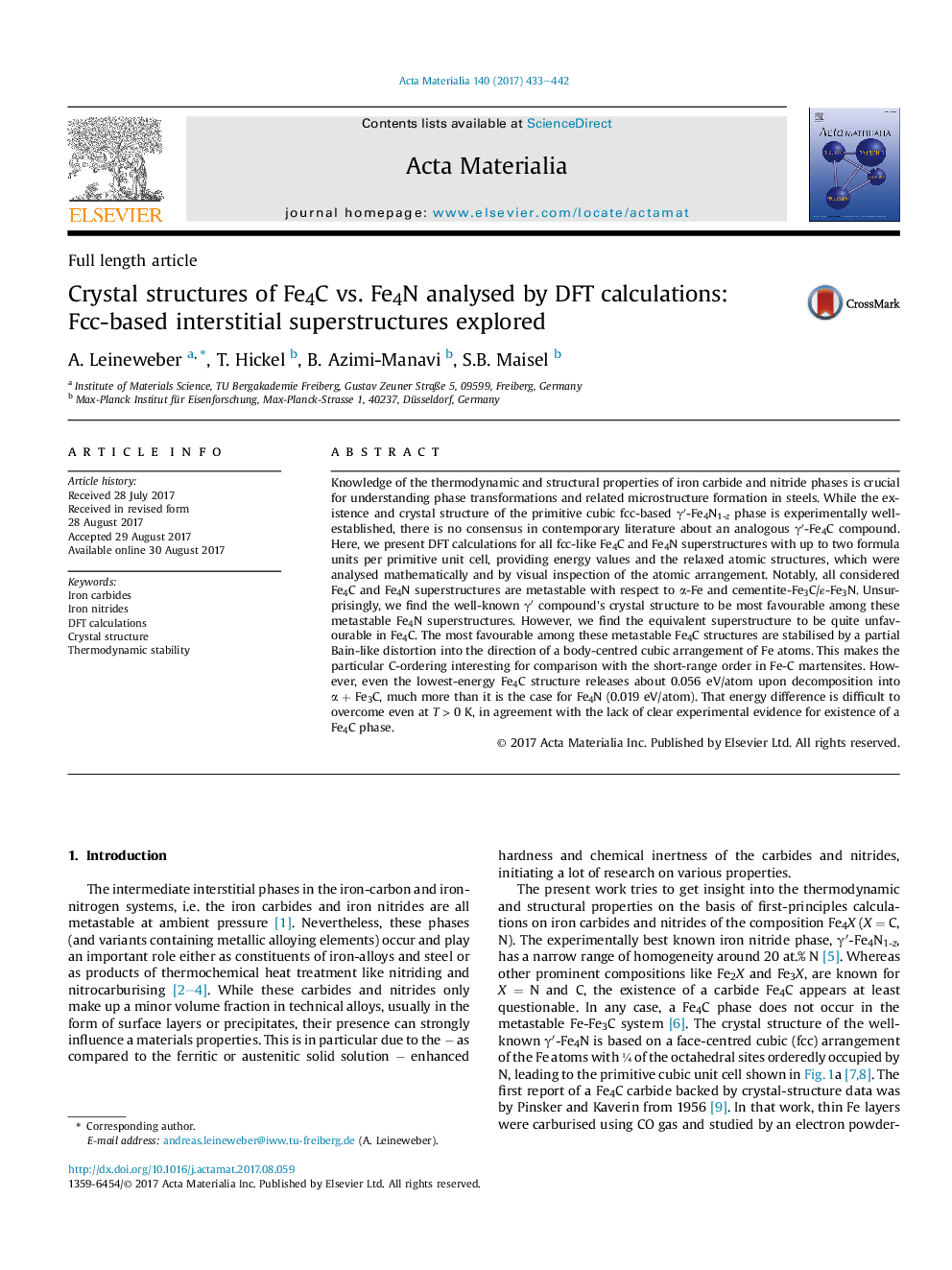| Article ID | Journal | Published Year | Pages | File Type |
|---|---|---|---|---|
| 5435791 | Acta Materialia | 2017 | 10 Pages |
Knowledge of the thermodynamic and structural properties of iron carbide and nitride phases is crucial for understanding phase transformations and related microstructure formation in steels. While the existence and crystal structure of the primitive cubic fcc-based γâ²-Fe4N1-z phase is experimentally well-established, there is no consensus in contemporary literature about an analogous γâ²-Fe4C compound. Here, we present DFT calculations for all fcc-like Fe4C and Fe4N superstructures with up to two formula units per primitive unit cell, providing energy values and the relaxed atomic structures, which were analysed mathematically and by visual inspection of the atomic arrangement. Notably, all considered Fe4C and Fe4N superstructures are metastable with respect to α-Fe and cementite-Fe3C/ε-Fe3N. Unsurprisingly, we find the well-known γⲠcompound's crystal structure to be most favourable among these metastable Fe4N superstructures. However, we find the equivalent superstructure to be quite unfavourable in Fe4C. The most favourable among these metastable Fe4C structures are stabilised by a partial Bain-like distortion into the direction of a body-centred cubic arrangement of Fe atoms. This makes the particular C-ordering interesting for comparison with the short-range order in Fe-C martensites. However, even the lowest-energy Fe4C structure releases about 0.056 eV/atom upon decomposition into α + Fe3C, much more than it is the case for Fe4N (0.019 eV/atom). That energy difference is difficult to overcome even at T > 0 K, in agreement with the lack of clear experimental evidence for existence of a Fe4C phase.
Graphical abstractDownload high-res image (222KB)Download full-size image
